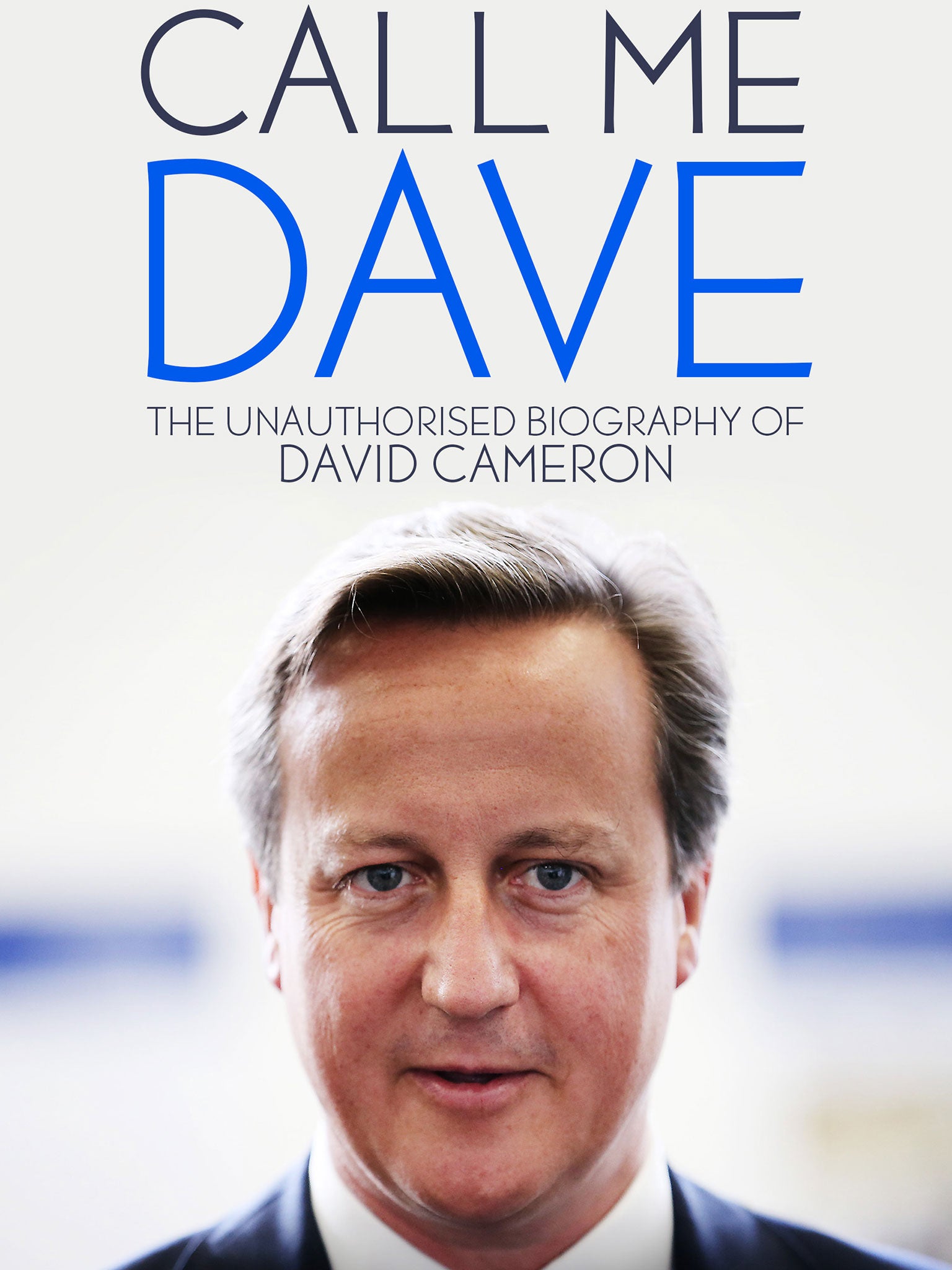Cameron at 10 vs Call me Dave: Which is better?
‘One thing that both books show is a lack of influential women’

David Cameron is a Prime Minister of many contrasts: old-fashioned patrician; Shire Tory; modern, liberal one-nation Conservative. He has lived in comfort and luxury, but has also endured enormous loss and pain. Fitting, then, that these two biographies of the man should be contrasting too.
Anthony Seldon and Peter Snowdon’s is a deeply detailed look at Cameron’s first term in Downing Street, and his unlikely majority in May’s election. It has apparently been given the blessing of Cameron and his team, who contributed interviews for it.
Michael Ashcroft and Isabel Oakeshott’s take has certainly not been sanctioned by Team Cameron. It focuses on gossipy stories, and leans heavily on previous work, notably the biography of Cameron by Francis Elliott and The Independent on Sunday’s James Hanning. It looks at Cameron over the course of his life, not just in Downing Street. Its aim seems to be score settling from Ashcroft over an apparently promised government role that never came, and pointing out that Cameron is a bit posh.
The Seldon and Snowdon book deals with 40 key moments. It is rigorously researched, giving an insight into the inner workings of Cameron’s No 10 and the coalition that we have not seen before. Some of the key moments detailed are the coalition negotiations with the Lib Dems and subsequent row over the Alternative Vote referendum, the disastrous NHS reshuffle, and the loss of key staff in Andy Coulson and Steve Hilton. Cameron’s pragmatism shines throughout all these incidents as both his greatest asset, and biggest weakness.
Call me Dave tries to show this pragmatism as a lack of ideological zeal, highlighting how Cameron pledged support to every candidate to succeed Margaret Thatcher, in a bid to ensure he was well placed.
As is often the case with biographies of the powerful, Cameron at 10 goes some way to humanising the PM. For example, Seldon and Snowdon reveal his boyish excitement at flying on President Barack Obama’s Marine One helicopter, telling his wife, Samantha, “we didn’t wear seatbelts”.
Ironically, Ashcroft’s tales of misdemeanours, seemingly intended to embarrass, actually have a similar effect. While each section of Cameron at 10 is filled with analysis, its non-linear nature gives a reduced sense of a narrative arc, of Cameron’s premiership developing over time. However, the authors do manage to tie together the moments that will define his legacy.
The Ashcroft-Oakshott offering is much more successful in portraying Cameron’s development as an individual, as it runs from childhood to Downing Street, and there are some fascinating anecdotes. However, much of the early-years reporting, while humourous, seems entirely ephemeral to our perception of Cameron the PM.
No doubt the authors would argue that it gives us an important insight into Cameron the man, and to some extent they are right, but at points it feels more like dinner party tittle-tattle than Prime Ministerial biography. That story about the pig’s head is a case in point, as is a rather laborious chapter about the 18-year-old Cameron’s odd encounter with the KGB while travelling the Trans-Siberian Express.
One thing that comes through very well in both books is the lack of influential women in the Cameron administration. Apart from Samantha, and the ever present aide Kate Fall, the Cameron premiership is a story with few women characters. Call Me Dave outlines an almost entirely male education and upbringing, while Cameron at 10 shows that his Downing Street operation also lacks high-powered women, save for a couple of notable exceptions. This perhaps goes some way to explaining how difficult Cameron oftens finds debating with women, something that has periodically caused him trouble.
Tragedy does play a part in the Cameron story, and both books take the time to look at the effect that the death of his son, Ivan, had on the Prime Minister. Seldon and Snowdon write that “nothing in Cameron’s life has affected him so deeply as the birth, life and death of his son”. Ashcroft and Oakeshott speak to associates of Cameron’s who argue that loving and losing a severely disabled child gave him a deep sense of compassion, which ultimately guided his political path.
Overall, both books successfully illustrate the contrasts and complexities within Cameron, revealing his undoubted talents, and also his shortcomings. While Ashcroft and Oakeshott’s Call me Dave should by no means be simply dismissed, ultimately the offering from Seldon and Snowden feels a far more substantial look at an intriguing political leader.
Subscribe to Independent Premium to bookmark this article
Want to bookmark your favourite articles and stories to read or reference later? Start your Independent Premium subscription today.

Join our commenting forum
Join thought-provoking conversations, follow other Independent readers and see their replies